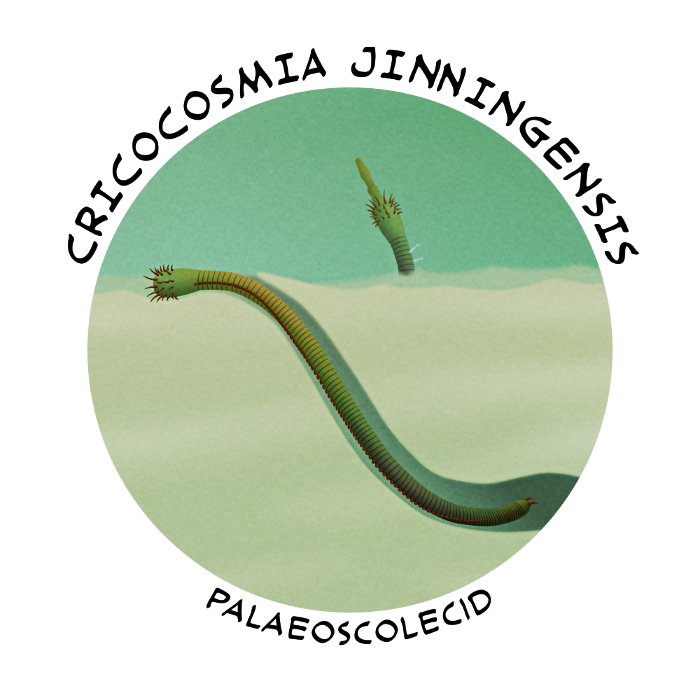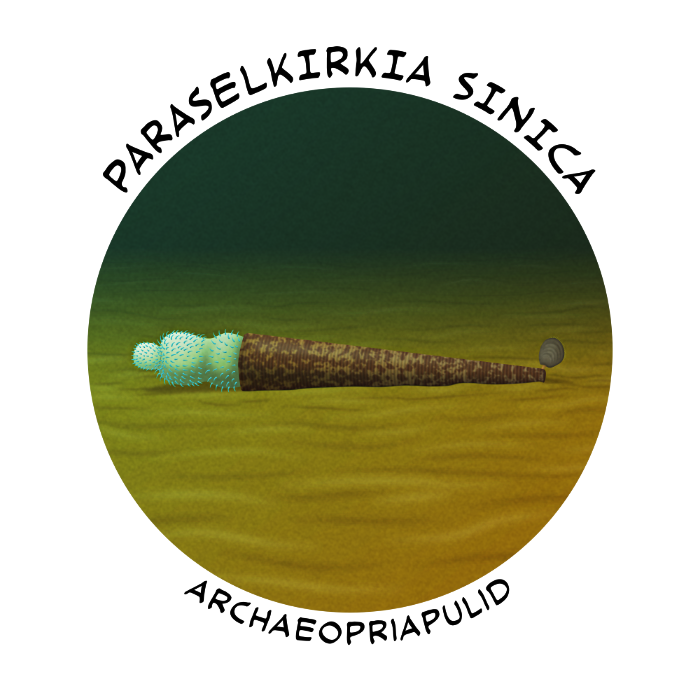The earliest branches of the ecdysozoan evolutionary tree are made up of the scalidophorans – animals with spiny retractable proboscises, represented today by the worm-like priapulids and kinorhynchs, and (sometimes*) the weird little loriciferans.
The first definite scalidophoran fossil is the tiny priapulid-like Eopriapulites from the early Cambrian about 535 million years ago, suggesting that the group probably originated from Acosmia-like ancestors not long before that point.
By the mid-Cambrian the most abundant early scalidophorans were the worm-like palaeoscolecids, and archaeopriapulids, with some species known from hundreds or even thousands of specimens. These groups don’t seem to have really been distinct lineages but were instead probably more like paraphyletic or “wastebasket” collections of similar-looking early wormy forms, with varying evolutionary relationships to each other and to other scalidophorans and cycloneuralians.
But whatever they were, some of these worms were also fairly successful during their time, with palaeoscolecids lasting for around 100 million years well past the Cambrian and up until the end of the Silurian.

Found in the Chinese Chengjiang fossil deposits (~518 million years ago), Cricocosmia jinningensis was a common palaeoscolecid which grew up to about 7cm long (2.75″). Like other palaeoscolecids it had a long ringed body covered in armor plates, a retractable spiny proboscis, and hooks on its rear end, and it generally lived in burrows in the seafloor.
A row of large spines running along each side of its body may have been used for traction, helping it crawl along the surface of the sediment when out hunting or disturbed from its burrow, and it was occasionally a host for the weird little bowling-pin shaped gnathiferan Inquicus.

Paraselkirkia sinica was an archaeopriapulid, known from both Chengjiang (~518 million years ago) and the Xiaoshiba Lagerstätte (~514 million years ago). About 2cm long (~0.75″), it was another common element of the Chinese Cambrian ecosystem, often found in dense clusters of individuals.
While most of its anatomy was very similar to modern priapulids, with a retractable spiny proboscis, it’s distinctive for having its body enclosed inside a conical organic-walled tube, similar to its close relative Selkirkia from the younger Canadian Burgess Shale.
Traditionally it’s been interpreted as living vertically embedded in the seafloor, but the presence of juvenile brachiopods attached to the rear end of some tubes suggests that it actually spent most of its time laying on the sediment surface, probably able to move itself around to some degree and only shallowly burrow.
Some specimens of Paraselkirkia have also been found with clusters of eggs preserved inside their bodies, with a reproductive system that looks almost identical to that of modern priapulids.
( * Morphological and molecular studies still don’t agree if loriciferans are closer related to scalidophorans, nematoids, or panarthropods. It’s also not entirely clear whether scalidophorans themselves are even a distinct lineage or are more of an “evolutionary grade” of early ecdysozoans. Sometimes scalidophorans and nematoids are also considered to be part of a larger grouping called cycloneuralians, but this might also be more of a “grade” than a distinct lineage.
Basically there’s a lot of disagreement in early ecdysozoan relationships and it’s only going to get worse once we get to the actual arthropods.)
